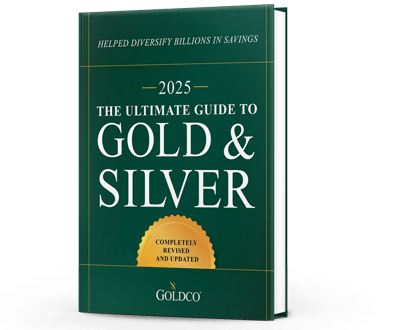Starting a Gold IRA: What You Need to Know
People choose to start a gold IRA for a number of different reasons Some are looking to help safeguard themselves against stock market instability Others are trying to help safeguard their wealth...
Retirement

One of the things investors fear the most is running out of money in retirement. Perhaps that fear is driven by the experiences of one’s own parents, or perhaps by stories of friends and family who have experienced financial difficulties. Regardless of the reason, it’s a fear that inspires many investors to save as much money as they can for retirement.
But saving money is sometimes easier said than done. Without both proper planning and execution, the desire to save and invest won’t come to fruition. Proper planning and dedication to a goal is crucial if you’re going to save enough money for retirement. If you keep putting off your saving and investment, thinking you can catch up later in life, you may find yourself disappointed.
While saving and investment isn’t necessarily easy, it doesn’t have to be incredibly difficult either. Here are five ways that you can avoid financial difficulty in retirement.
One of the keys to any successful investment portfolio is proper diversification. You may have heard stories of people who hit it big by investing in Microsoft or Apple before they were household names. But how many of those investors stuck with those stocks for the long haul and continued making gains for 30 years or more?
For every investor who has tried to replicate those gains by investing in one or two “can’t miss” stocks, there are probably hundreds who have tried the same strategy and failed. That’s why you’ll read so much about portfolio diversification – don’t put all your eggs in one basket.
That extends not just to one particular stock or bond, but to entire classes of stocks or bonds as well. You may think tech stocks are the way to go, or that investing in financials is a sure bet because of Federal Reserve bailouts and backstops. But maximizing your exposure to a single asset class is also inherently risky.
That’s why true portfolio diversification means not just investing in stocks, bonds, and mutual funds, but also other classes of assets, such as real estate, commodities, or precious metals. If you have existing retirement assets in a 401(k), for instance, you could roll them over into a gold IRA, allowing you to diversify your portfolio and benefit from the protection and long-term growth that gold offers. Don’t be afraid to branch out and invest in alternative assets that can reduce your risk profile and diversify your portfolio.
Like many other things in like, winging it isn’t exactly the best method to build up your retirement funds. If you were to drive from New York to Los Angeles, would you just get on the road and start heading west, figuring you’d make it eventually, or would you pull out a map and figure out the most direct route, the one with the most scenic stops, or the one with the most gas stations?
Saving for retirement is much the same. You’ll need to figure out your final destination, i.e. the amount of money you’ll want to have saved up when you retire; figure out the route to get there, i.e. how much you’ll need to save each year at certain growth rates; and put together a plan to achieve that.
One way to bring your plans to fruition is to create a budget. Without knowing how much money you’re taking in, how much you’re spending, and how much you’re saving and investing, it will be nearly impossible to know where you are on the road to achieving your financial goals.
Going back to the road trip analogy, imagine doing the NY-LA trip in a car with no speedometer, no odometer, no fuel gauge, and no clock. You would be flying blind, with no idea how far you’d gone, what kind of progress you’d made, and no clue how much longer you had to or could drive. But millions of American households live like that, completely oblivious about their spending habits. That’s not conducive to building up a large nest egg for retirement.
Another way to help ensure that you keep yourself out of financial difficulty is adjusting your lifestyle to your savings or retirement income. If you have large amounts of savings or a high income in retirement so that you don’t have to cut back on your standard of living, that’s great. But many Americans can’t afford to do that.
Many more dream big, but realize once they reach retirement that insufficient savings, health concerns, or family issues end up derailing their plans. Many also realize that the lifestyle they were living before retirement was largely driven by their work. Now that they’re retired, they realize that they don’t have to live in a high-cost, high-tax metropolitan area. They don’t have to spend as much on cars because they’re not commuting every day. And they have the freedom and flexibility to adjust their way of life to their new circumstances. That can have a major positive impact on their finances in retirement.
Finally, while no retiree wants to get back into the rat race, some find it necessary to develop new income streams, while others do miss the work they used to do. That’s why more and more retirees are going back to part-time work. Whether it’s working as a greeter at Walmart, doing some consulting work, or starting an online business, developing new income streams can do wonders to securing your financial independence in retirement.
With pensions largely a thing of the past, Social Security facing its own issues, and stock markets on the verge of a major correction, retirees will need everything they can to maximize their income and ensure their financial well-being in retirement. Creative thinking to develop additional income streams can be just the ticket.
Running out of money in retirement may be everyone’s fear, but it’s not something that happens all at once. It’s the result of a series of choices over a long period of time. Making the right choices, creating a plan and sticking to it, and dedicating yourself to diligent saving and investment can help ensure that you’ll be able to enjoy a long and comfortable retirement.

